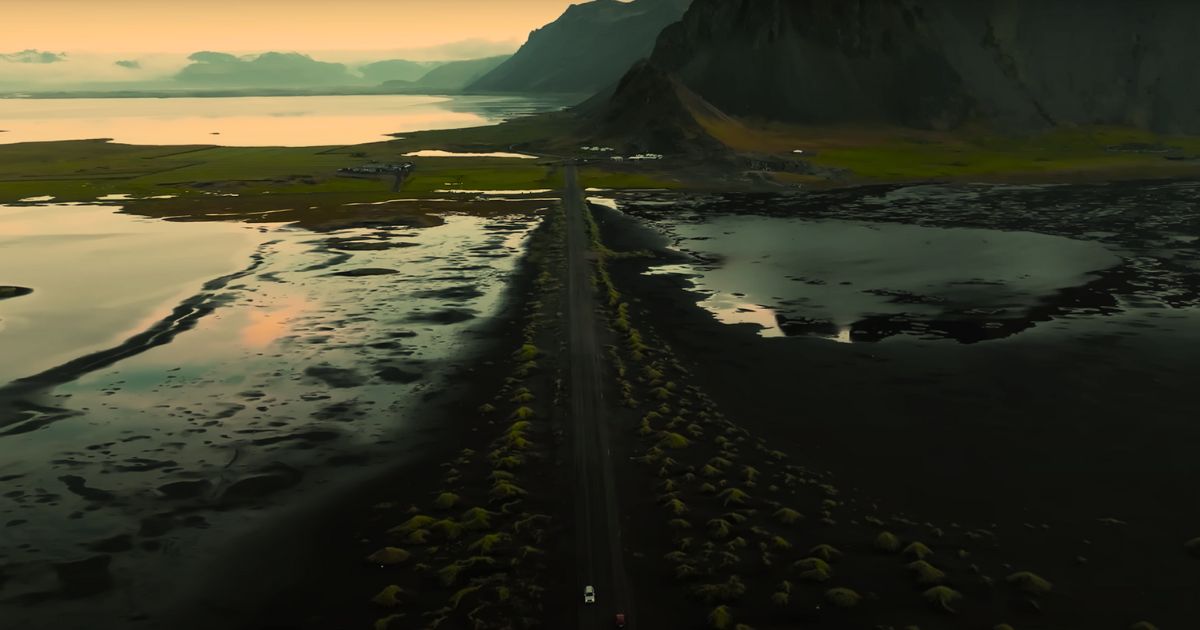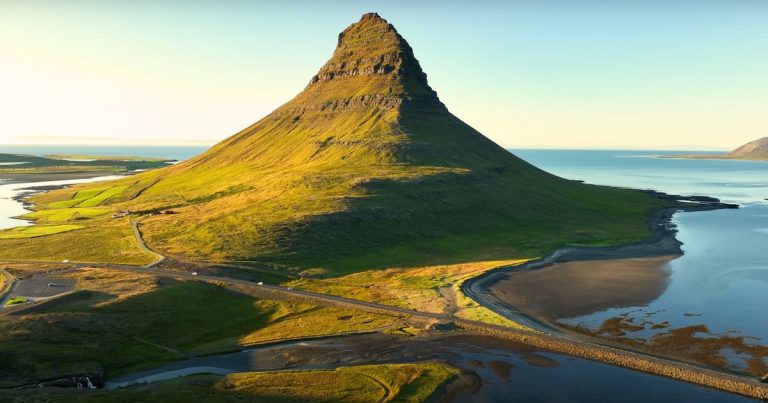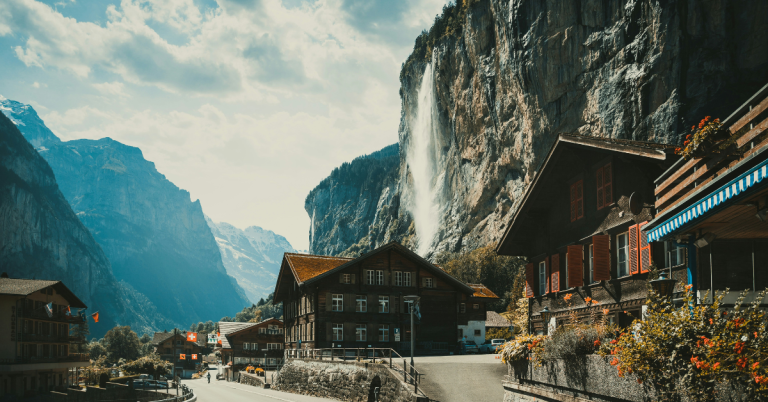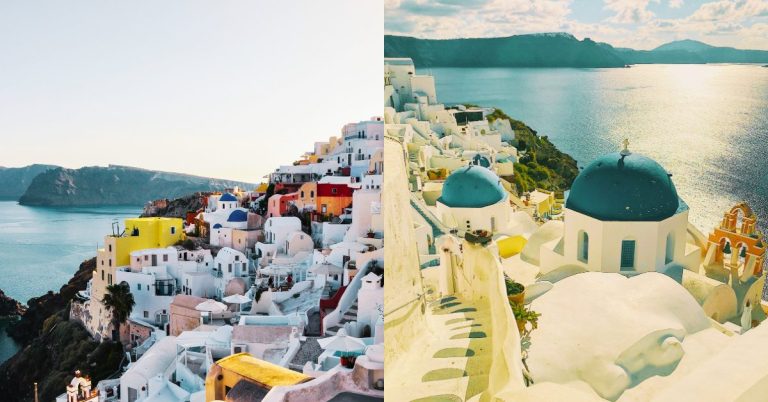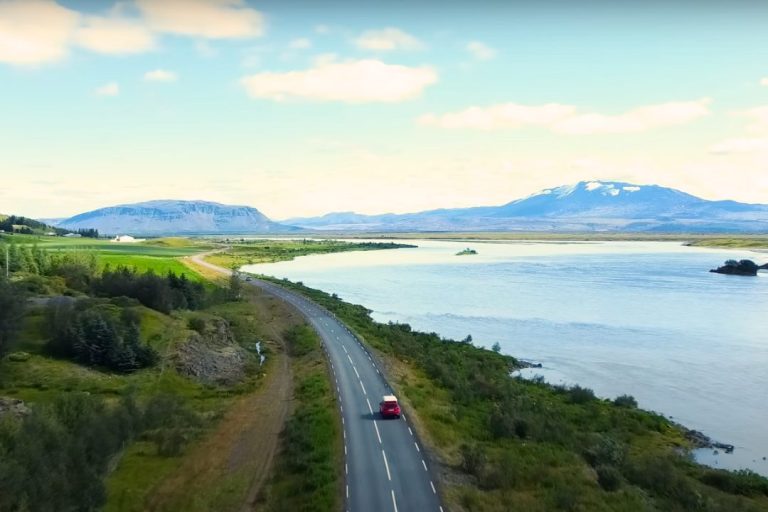Best travel itinerary for iceland (The Complete Trip Guide 2025)
If you’re planning a wonder trip to Iceland, here is a great place to start. There’s natural beauty and unique places, but it depends on your trip plan or interests. It’s more than just a starting point for adventures.
For those planning to explore Iceland’s landscapes, in this itinerary, I’ll cover the complete guide to the best travel itinerary for Iceland, including a road trip around the island, hiking some of the best places in Iceland, and incredible fooda. With this itinerary, you’ll be ready to start your trip plan as soon as you and arrive in Iceland.
From awe-inspiring Icelandic waterfalls to hidden geothermal gems, prepare for an adventure that will leave you breathless and inspired.
When we wanted to kick off the last year by chasing the Northern Lights, we immediately dove into research and discovered that it was absolutely perfect for this adventure.
On our journey, we were excited to share exactly how to spend a perfect vacation. We marveled at Frozsoakinger Falls, soaked in steamy wanderings, and walked through snow-covered landscapes under nights lit up by the mesmerizing Aurora. If this sounds like your dream vacation in Iceland itinerary, then you’re in the right place.
Table of Contents
These details will help you the perfect time to visit Iceland, knowing which is suitable for your trip to get more experience that balances cost, climate, and crowds.
| Time To Visit Iceland | May-August |
| Best Time To Go To Reykjavik | September–October |
| Best Time To See the Northern Lights | October-November |
| Best Time To Do the Golden Circle | Spring (May–June), autumn (September–October) |
| Cheapest Time To Visit Iceland | Spring (May–June), autumn (September–October) |
| Best Time For Sightseeing | May–mid-June, September |
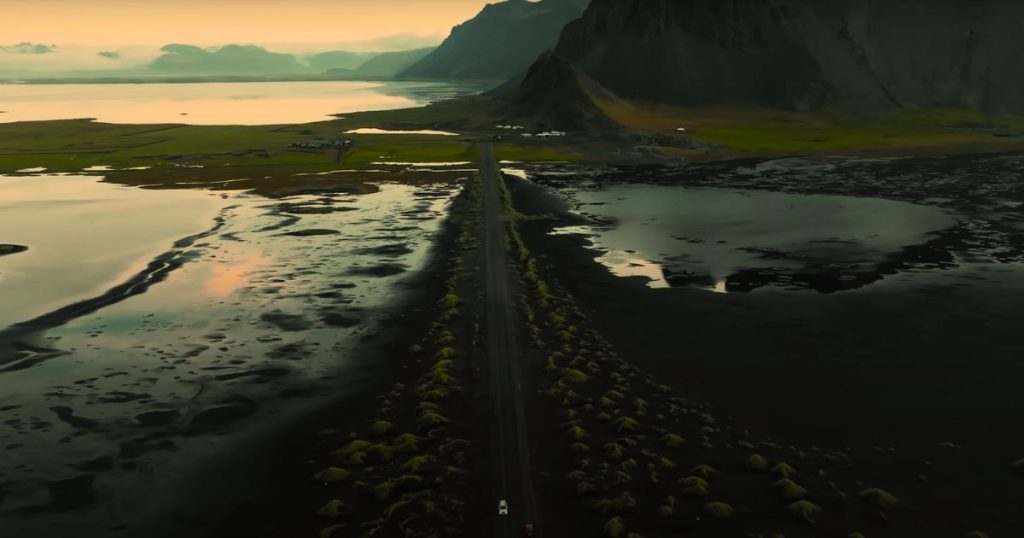
Pro tip: If you’re going to prepare your trip to Iceland during winter, fall, and early spring, remember to check weather alerts for travel disruptions road trip closures, visit this Safetravel.is site or follow them on social media for more info.
The Complete Best Travel Itinerary for Iceland
Planning your trip here isn’t just a luxury, it’s essential for a truly stress-free and memorable adventure. A well-structured itinerary helps you navigate through the island’s diverse attractions without feeling overwhelmed or rushed.
By carefully selecting the best time to visit and mapping out key stops along the way, you’ll ensure that you savor every moment and appreciate every sight.
In this post, we’ll share everything you need to know about visiting Iceland. From insights on what kind of weather to expect and the best activities to dive into to practical tips on winter driving and more, I’ve got you covered.
Get Into Iceland
Getting into Iceland is easier than you might think! The main gateway is Keflavik International Airport (KEF), conveniently located just outside Reykjavik. Whether you’re eager to dive into an Icelandic adventure or want to sample the local culture with a free stopover, here’s what you need to know.
Flying In
Icelandair connects travelers from major hubs across North America and Europe, making flights to Keflavik accessible and affordable. One of the best perks is their free stopover program, which allows you to spend up to seven days exploring Iceland before continuing on your journey. This is an ideal opportunity to test the cultural waters without a full commitment.
From the Airport to the City
Once you land, you’re only about a 45-minute shuttle ride away from Reykjavik’s bustling city center. A one-way ticket costs roughly 2,200 ISK, and you can easily catch a ride from the airport.
For those who prefer to explore on their own, most major car rental companies have offices right at the airport. If you’re looking for a more budget-friendly option, several smaller companies operate nearby and can arrange a pickup upon arrival.
During the summer, hitchhiking into Reykjavik is possible, though remember that many rental companies operate from locations other than the airport. This might mean a longer wait as you find a ride, but it’s a fun way to experience local travel if you’re in the mood for an adventure.
Entry Requirements
When it comes to entering Iceland, the process is straightforward. As part of the Schengen Agreement, Iceland welcomes citizens from the EU without a visa. This visa-free access also extends to travelers from Canada, the United States, the UK, Australia, and New Zealand.
For a complete list of countries that enjoy this privilege, be sure to check the Directorate of Immigration’s website or get in touch with your local consulate.

Best Time to Visit and Seasonal Considerations
Seasonal Weather and Activities
Planning a trip to Iceland? One of the first things you’ll notice is how dramatically the weather changes throughout the year! In winter (late September through early April), the long, dark nights create the perfect setting for witnessing the mesmerizing Northern Lights.
During the summer months (May through August), you’ll enjoy almost endless daylight, which is ideal for epic road trips, hiking adventures, and exploring Iceland’s rugged beauty. Each season offers a unique charm, so consider what kind of experience you’re after when picking your dates.
Tourist Season Insights
Traveling during Iceland’s peak season can be an adventure in itself. If you love a lively atmosphere, summer might be your best bet, but be ready for larger crowds at popular sites. A few smart tips: book your accommodations early and try visiting major attractions during off-peak hours to avoid the rush.
During the shoulder or off-season helps you save some cash and allows you to enjoy a quieter, more intimate experience of Iceland’s natural wonders. Imagine standing alone at a stunning waterfall or a secluded geothermal pool truly unforgettable, there’s more incredible waterfalls out there, one of my favorite waterfalls is Glymur Waterfall. I recommend you to visit it.
Transportation and Accommodation Options
When planning your Iceland adventure, one of the first things you’ll want to sort out is how to get around this breathtaking island. Iceland’s natural beauty is best experienced when exploring at your own pace. For many travelers, the choice comes down to a self-drive tour versus joining a guided tour.
Self-Drive Tours vs. Guided Tours
If you’re the independent type who loves the freedom of setting your own itinerary, a self-driving tour might be perfect for you. Renting a car allows you to stop whenever a stunning vista catches your eye or take that unexpected detour down a hidden travel road trip.
But a quick word of advice: Iceland’s weather can be as unpredictable as it is beautiful, and many roads are rugged or gravel-covered. So, ensure you’re well-prepared, check your rental car’s insurance, and always watch the local weather updates.
If this is your first time visiting Iceland, I highly recommend guided tours. They take a lot of planning and stress off your shoulders. With a knowledgeable local guide leading the way, you’ll gain fascinating insights into Iceland’s history and discover hidden gems that you might otherwise miss. This is a great option if you prefer a more structured experience and want to learn all the insider details without figuring it out yourself.
Budgeting and Travel Tips
Planning your trip to Iceland doesn’t have to be overwhelming let’s break it down into manageable pieces!
- Cost Breakdown:
- Transportation:
Think about how you’ll get around. Will you rent a car and drive along the scenic routes, or would a guided tour be more your style? Remember to factor in fuel costs, tolls, or parking fees. A little extra planning here can go a long way! - Accommodation:
Iceland offers everything from cozy hotels and charming guesthouses to unique Airbnb spots like countryside cabins or eco-lodges. To get the best deal, compare seasonal rates and look for discounts. - Food:
Enjoying Icelandic cuisine is a must! Whether you’re dining at a local restaurant, grabbing street food, or even preparing your own meals with groceries from the local market, budgeting for food is key. Plan for a mix of everyday meals and the occasional splurge on a special culinary experience. - Activities:
There’s so much to see and do, from paying entrance fees at iconic attractions to booking guided tours for Northern Lights or glacier hikes. Keep an eye out for combo packages or city passes that can help you save a bit on your adventure.
- Transportation:
- Insider Tips:
- Booking Strategies:
One of the best ways to save money is to book your flights, accommodations, and tours well in advance. Use price comparison tools and set up alerts to take advantage of discounts. - Avoiding Common Pitfalls:
Always be on the lookout for hidden fees or unexpected seasonal price hikes. It’s also super helpful to read recent reviews from other travelers and double-check cancellation policies before you book.
- Booking Strategies:
- Essential Apps and Resources:
To make your planning even easier, use travel apps like free TripIt. I recommend you use the app Roadtrippers, it’s perfect for your road trip, or Google Maps to map out your route. Local websites and weather apps will also keep you informed about road conditions and any local events that might spice up your itinerary.
Best Places to Visit in Iceland
Reykjavik
If you’re beginning your Iceland adventure by land or if you landed by boat, Reykjavik is the place to start. This capital city is charming, cozy, and delightfully compact, making it easy to explore on foot.
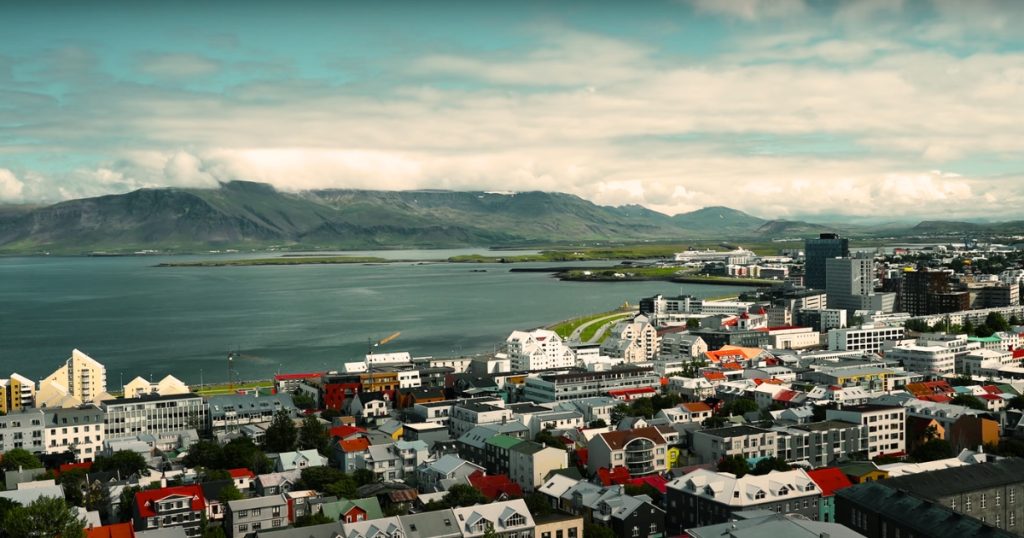
Whether you’re staying near the buzzing center or wandering the quaint neighborhoods, you’ll find plenty of great restaurants, lively hostels, and unique attractions (ever heard of the Icelandic Phallological Museum? It’s definitely a conversation starter!).
With a population of just 120,000, spending one or two days here is plenty of time to soak in the local vibe, stroll through its streets, and enjoy everything from traditional Icelandic food to a surprisingly vibrant vegan scene.
The Golden Circle
No trip to Iceland is complete without venturing along the famous Golden Circle route. This popular loop outside Reykjavik covers must-see sights like Gullfoss Waterfall, the erupting Strokkur geyser, and the historic Þingvellir National Park.
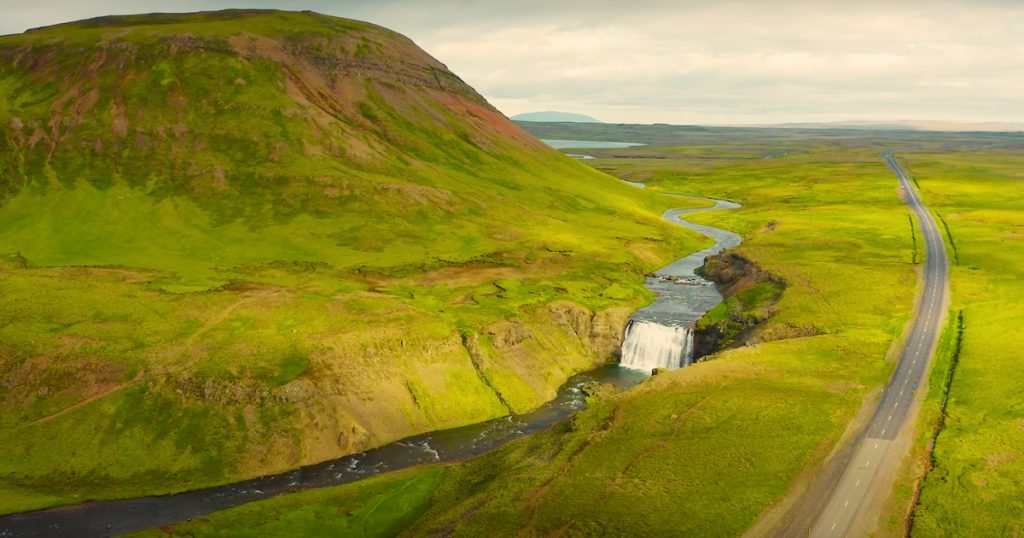
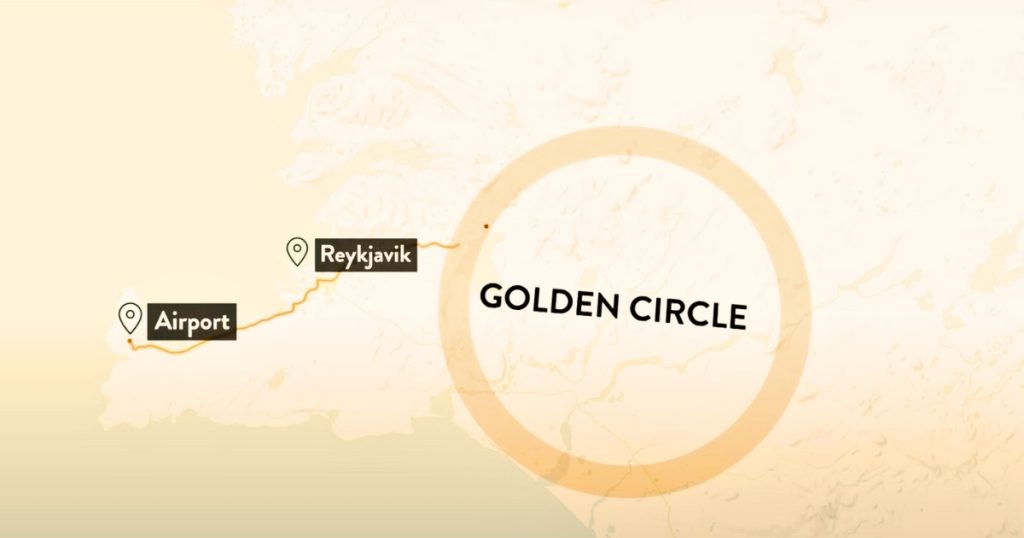
While these attractions are often bustling with tourists, they remain iconic for a reason. To avoid the crowds, try arriving early in the day. And if you’re open to meeting fellow travelers, consider staying in Laugarvatn, a well-known resting spot among backpackers exploring the Golden Circle.
Keflavík
Often overlooked as just the gateway to Iceland via its airport, Keflavík is more intriguing than you might think. Once a U.S. military airbase and affectionately known as the “Liverpool of the North,” this small town (with around 15,000 residents) carries a unique, laid-back vibe.
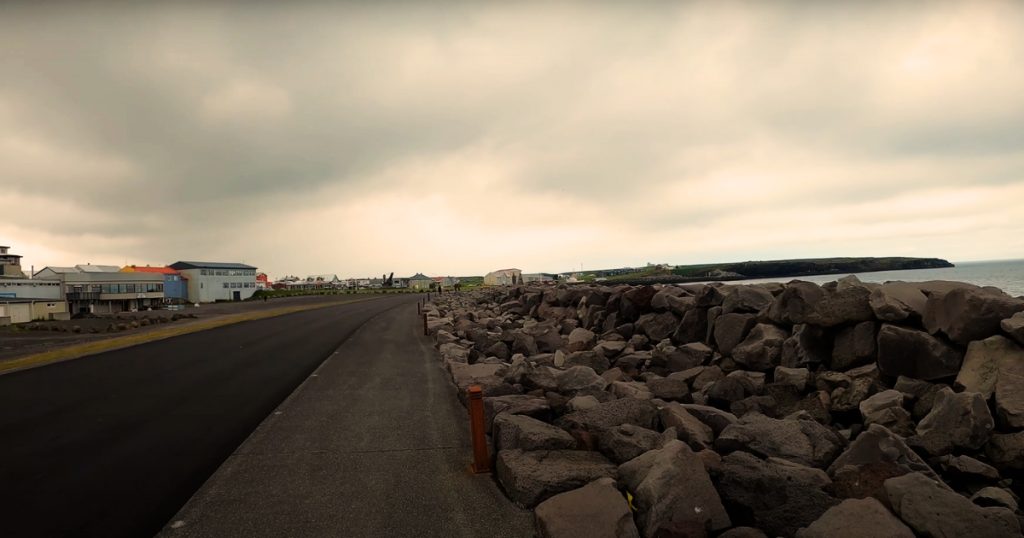
Consider spending a day here on your way to Reykjavik or use it as a base for exploring nearby natural treasures like the Reykjanesfólkvangur nature preserve. A quick stop in Keflavík offers a refreshing glimpse into Iceland’s local history and cultural evolution.
Seljalandsfoss
Located on the main highway east of Reykjavik, Seljalandsfoss is a waterfall that stands out from the rest. At 60 meters tall, its beauty is amplified by a unique twist: you can actually walk behind the cascading water.

Although it can get busy, especially since it’s one of the top bus stops for visitors, you’ll find that the experience of being enveloped by the waterfall’s mist is well worth a little extra hustle. Plus, there’s a small tourist booth on-site offering souvenirs and snacks.
Skógafoss
Another spectacular waterfall, Skógafoss, is celebrated for its impressive width and height. The constant spray often creates a stunning rainbow at the base, perfect for memorable photos. Legend even whispers of hidden treasure nearby. At the base of the falls, you can grab a bite at a small restaurant or even spend the night at a nearby hotel or campground.
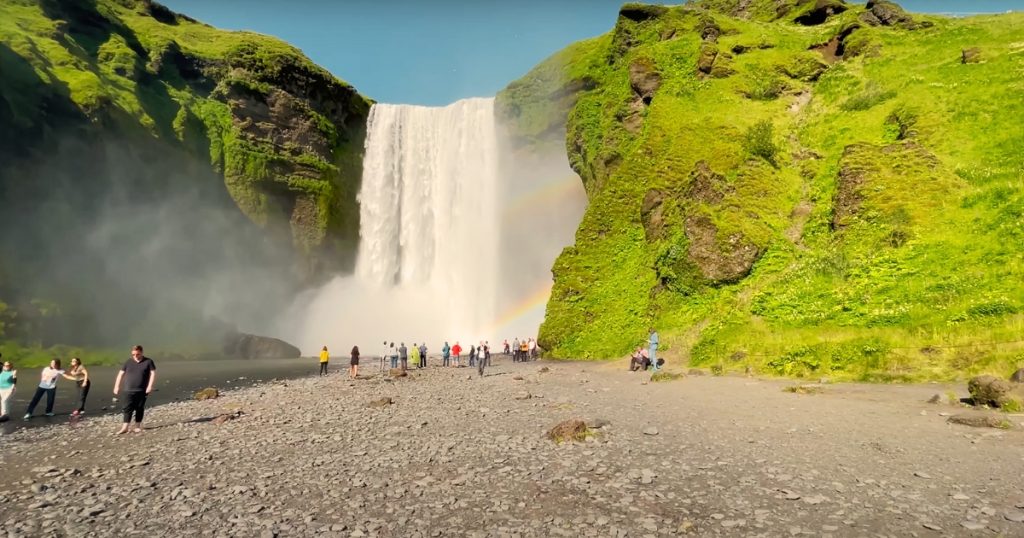
For those feeling adventurous, Skógafoss also serves as the starting point for the epic 30km Fimmvörðuháls Trail, where you’ll traverse glaciers and volcanoes.
Vík
Vík is a small village that should definitely be on your itinerary, especially if you’re drawn to dramatic natural contrasts. Here, I’ll discover black sand beaches that seem almost otherworldly alongside scenic cliffs shrouded in mystical fog.

These rugged coastal landscapes are also home to Iceland’s beloved puffins. For an even better view, take a short hike up the nearby hill (where you’ll also find a charming little church) and soak in the panorama.
Svartifoss
Svartifoss is another unforgettable waterfall that stands out due to the striking black basalt columns surrounding it. Located within one of Iceland’s national parks near Skaftafell, this spot not only impresses with its natural beauty but also invites you to explore the larger park area.
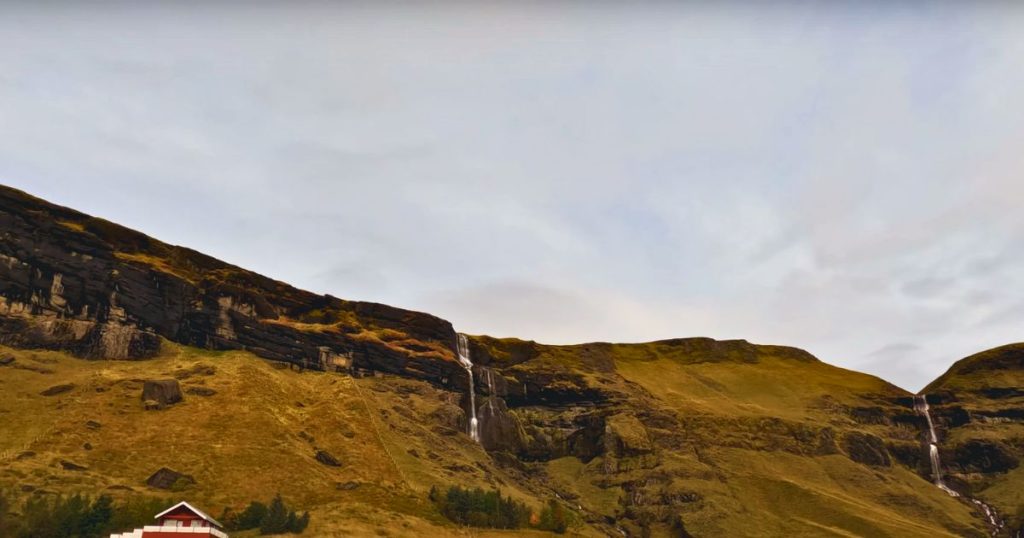
With ample camping sites and well-marked hiking trails, Svartifoss offers a more intimate, off-the-beaten-path experience. To learn more about the park’s rich natural history, be sure to stop by a visitor center or consider a guided tour.
Jökulsárlón
Picture yourself at Jökulsárlón, a glacial lake nestled in southeast Iceland on the edge of Vatnajökull National Park, which is the same park that shelters the stunning Svartifoss waterfall. Here, you can get up close to the magnificent Breiðamerkurjökull glacier, where icebergs drift serenely across crystal-clear waters.
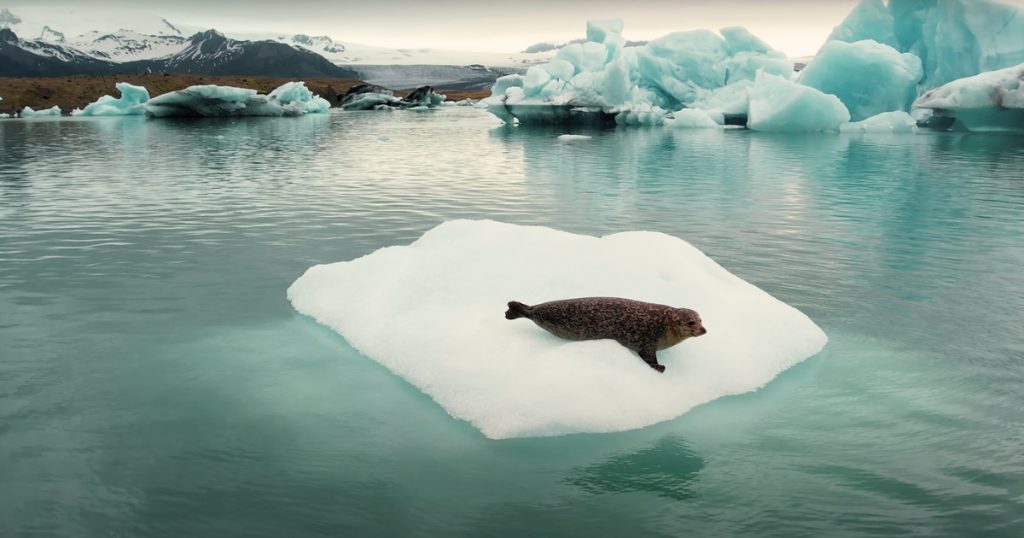
The ever-changing palette of blues and whites makes it an ideal spot for relaxation and photography. And if you’re lucky, you might even glimpse playful seals feasting in the icy waters as winter approaches.
Dettifoss
Next, brace yourself for the raw power of Dettifoss, widely regarded as the most powerful waterfall in Europe. The journey there might test your driving skills.
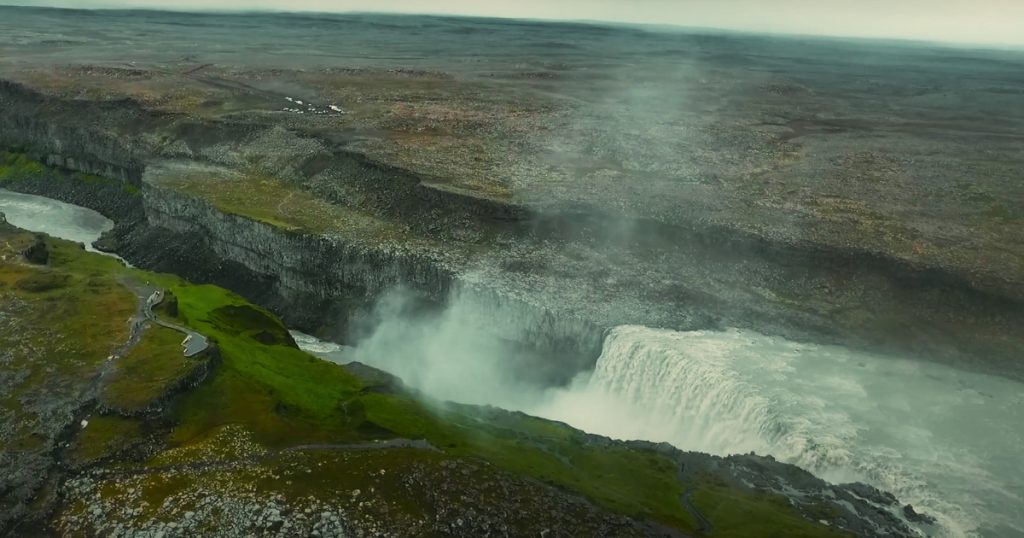
Roads can be rough and demand a slow, cautious pace, but the reward is an unforgettable view of nature’s force. Although you can’t cross from one side to the other, both viewpoints deliver equally breathtaking vistas, ensuring that every angle of this roaring cascade leaves you in awe.
Mývatn
Between the thundering falls of Dettifoss and the majestic Goðafoss lies the serene Lake Mývatn area. Known for its otherworldly landscapes and even a dash of “Game of Thrones” magic, Mývatn invites hikers and fans alike to explore its scenic trails.

After a day of adventure, unwind at the Mývatn Nature Baths, soaking in these warm geothermal waters is pure bliss. Don’t miss a visit to Hverir, a nearby geothermal wonderland dotted with smoking, bubbling craters that, despite their pungent aroma, provide a striking contrast to the surrounding landscape.
Goðafoss
A short distance from Dettifoss, you’ll discover Goðafoss, aptly named the “Waterfall of the Gods.” This gem is easily accessible, especially since it’s near Akureyri, one of Iceland’s larger urban centers.
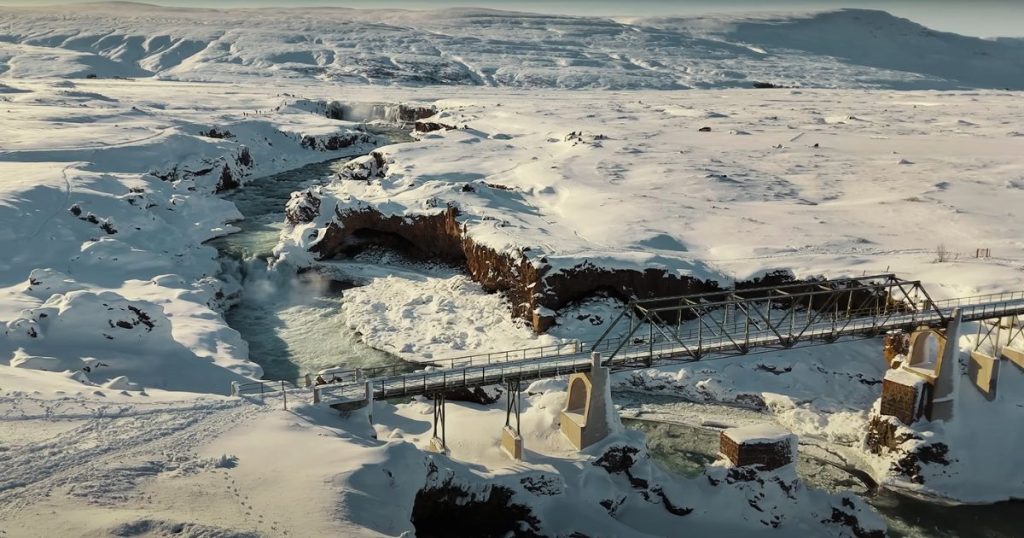
The waterfall’s graceful cascade is not only a visual delight but also offers a perfect complement to the rugged natural scenes nearby. Given its proximity to Mývatn and Dettifoss, many travelers choose to experience all three attractions in a single day, making it a highlight of any Iceland itinerary.
Akureyri
Speaking of urban escapes, Akureyri stands out as Iceland’s vibrant northern hub. This charming town, located along the north coast, provides a refreshing break from the wild outdoors. Stroll through its quaint streets, visit the historic Catholic church built in 1912, or take a leisurely hike up one of the surrounding hills for panoramic views of the city and beyond.

Akureyri blends modern comforts with Iceland’s storied past, offering a taste of civilization in the midst of nature’s splendor.
The Westfjords
For those with a bit more time on their hands, the Westfjords are a must. This vast, remote region in the northwest of Iceland is a world of its own where dramatic coastal drives and secluded landscapes reign supreme.
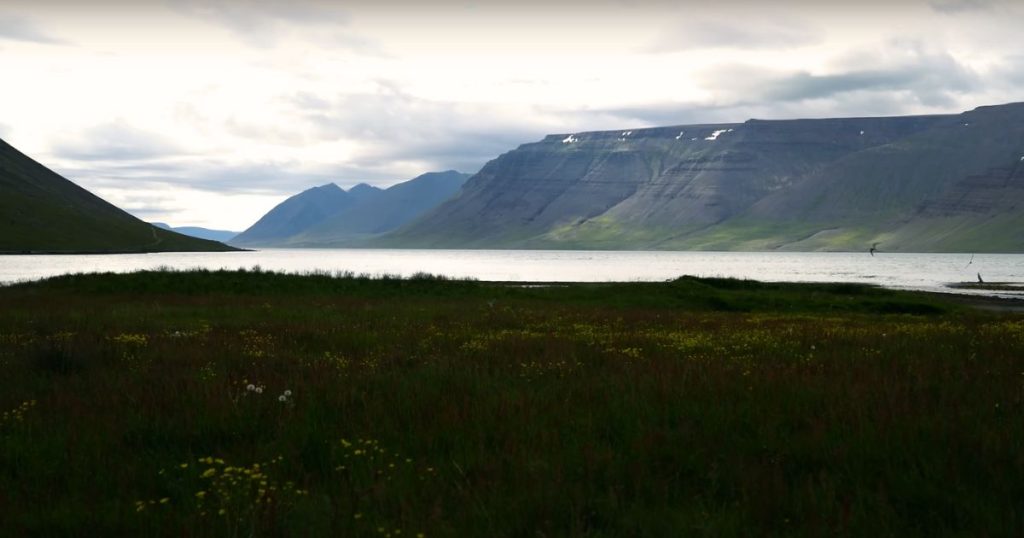
Plan for at least a couple of days to truly absorb the unspoiled beauty and expansive scenery of the Westfjords, as every winding road unveils a new, unforgettable vista.
Top Attractions Places in Iceland
If you plan a trip to Iceland, you simply can’t miss the famous Golden Circle. Imagine standing at Þingvellir National Park, where you can actually see the rift between the North American and Eurasian tectonic plates; it’s a geological wonder. Then there’s Geysir, where nature puts on a fiery show with its erupting hot springs and Gullfoss Waterfall, a breathtaking cascade that will leave you in awe.
And let’s not forget Reykjavik! This vibrant city is bursting with charm. Take a stroll around Harpa Concert Hall with its mesmerizing glass façade, climb up Hallgrímskirkja for panoramic views of the city, or dive into local history at one of the city’s many museums.
Natural Wonders
Iceland’s landscape is like no other. Picture yourself standing in front of Seljalandsfoss, a waterfall so inviting you can actually walk behind it, or feeling the mist of Skógafoss on your face as you admire its powerful drop.
Beyond the waterfalls, Iceland boasts an incredible variety of landscapes, from sparkling glaciers and fiery volcanoes to eerie, dramatic black sand beaches that seem straight out of a movie.
Unique Experiences
The magic of Iceland doesn’t stop at its scenery. In the right season, the skies come alive with the dancing colors of the Northern Lights, a natural light show that’s truly unforgettable. After a day of exploration, why not relax in one of Iceland’s many hot springs or geothermal spas? It’s the perfect way to unwind and soak in the island’s natural energy.
Whether you’re chasing waterfalls, exploring historical sites, or simply getting lost in the natural beauty, these stops and attractions will make your Icelandic adventure one to remember!
The Food: Exploring Icelandic Culinary Delights
Icelandic Cuisine Overview
Imagine savoring flavors that have been honed over centuries! Icelandic cuisine is as rugged and resourceful as the island itself. This culinary tradition grew from a history of seafaring, farming, and making the most of every available ingredient.
Think hearty lamb, the freshest seafood straight from the North Atlantic, creamy dairy products, and even wild, foraged herbs that add a unique twist to traditional recipes.
The way Icelanders cook and eat tells a fascinating story. Their food reflects the island’s isolation and dramatic, ever-changing landscape, emphasizing preservation techniques and seasonal ingredients. It blends Viking heritage and modern culinary creativity, giving you a taste of history with every bite.
Must-Try Dishes and Local Favorites
No trip to Iceland is complete without sampling its iconic dishes! Here are some must-try delights that perfectly capture the spirit of Icelandic cuisine:
- Lamb Soup (Kjötsúpa):
Warm up with this hearty stew, brimming with tender lamb and fresh, seasonal vegetables. It’s the perfect comfort food on a chilly Icelandic day. - Skyr:
Enjoy this thick, creamy dairy treat that’s a bit like yogurt but with its own distinct charm. Whether you have it plain or mixed with berries and a drizzle of honey, it’s a refreshing snack any time of day. - Seafood Specialties:
Iceland’s pristine waters yield some truly spectacular seafood. Picture cod, haddock, and langoustine served simply to let their natural flavors shine.
For those feeling adventurous, there are even more unique options to try:
- Fermented Shark (Hákarl):
This is one of Iceland’s most legendary dishes. It might not be for everyone, but if you’re up for a culinary challenge, tasting this traditional delicacy will give you a real insight into Iceland’s food history and preparation techniques. - Rye Bread (Rúgbrauð):
This dense, sweet bread is a local favorite. It’s often baked using geothermal heat and is delicious on its own or paired with butter or smoked fish.
This is Icelandic cuisine at its best a true reflection of the island’s character, offering both comfort and adventure on a plate. Enjoy exploring these flavors, and let them add an extra layer of richness to your Icelandic journey!
Adventures in Iceland
Hidden Gems
- Lesser-Known Natural Wonders:
Imagine discovering a hidden waterfall tucked away from the crowds or stumbling upon a secret geothermal spot that feels like your own private oasis. Venture into rugged lava fields and explore remote volcanic craters where nature shows off its raw, untouched beauty. - Scenic Routes Off the Main Highways:
Get off the beaten path and drive along lesser-known byways that reveal Iceland’s diverse landscapes in all their glory. These backroads are dotted with secret stops and breathtaking viewpoints, perfect for that unforgettable snapshot or a quiet moment of reflection. - Exploring Remote Villages and Local Culture:
Step into a world where Icelandic hospitality is genuine and the pace of life is slower. Visit small coastal and inland villages, chat with locals, savor traditional dishes, and immerse yourself in the rich cultural heritage that thrives far from the hustle and bustle of the city.
Adventure Activities
- Hiking Trails:
Wander through secluded paths that lead you to dramatic landscapes from towering glaciers to deep canyons and peaceful highlands. Plus, you’ll find handy maps and safety tips along the way to keep your adventure both thrilling and secure. - Ice Cave Tours:
For a truly surreal experience, join a guided tour into the heart of an ice cave. These crystal formations, only accessible during certain seasons. Just be sure to follow expert advice on safety and gear up appropriately for this icy escapade. - Wildlife Encounters:
There’s nothing quite like the thrill of spotting Iceland’s native wildlife in their natural habitats. Whether it’s arctic birds soaring above, playful seals by the shore, or even reindeer roaming freely, plan your visit during the best times of year to ensure a responsible and awe-inspiring encounter.
Safely Exploring Iceland’s Rugged Landscapes
Before setting out on your off-road adventure, get the inside scoop on how to prepare—think essential gear, weather checks, and local insights. These tips help you tackle Iceland’s unpredictable terrain with confidence and ensure you’re respecting and preserving the delicate natural environment that makes this island so special.
Travel Safety in Iceland
Dealing with Unpredictable Weather and Terrain
Iceland’s weather can change quickly, so it’s a good idea to check the forecast before you go.
Pack layers, a waterproof jacket, and sturdy hiking boots, you never know when you might need them! Also, take some time to research your route, and if you’re unsure about a trail or area, consider joining a guided tour. It’s always better to be safe than sorry when exploring those dramatic landscapes.
Emergency Contacts and Local Guidelines
Make sure you save 112 on your phone; that’s the emergency number in Iceland.
Know where the nearest medical facilities are, especially if you plan to venture off the beaten path. And, of course, always follow any safety signs or local advisories posted around natural attractions.
Cultural Etiquette
How to Interact with Locals
Icelanders are friendly and welcoming, so a smile and a little courtesy go a long way. When chatting with locals, respect their space, and don’t be surprised if they seem a bit reserved at first.
Also, before snapping a photo of someone or private property, a quick ask is always appreciated. A few words in Icelandic, even a simple “Hæ” (hello), can really make a positive impression!
Respecting Nature and Conserving the Environment
Iceland’s stunning nature is fragile, so please do your part to help preserve it. Stick to marked trails to avoid damaging the local ecosystem, and always remember the “leave no trace” principle.
That means packing out trash and keeping your impact on nature as light as possible. When you encounter wildlife, admire it from a distance and let it be as undisturbed as possible.
Final Thoughts
That wraps up our guide on the Best travel itinerary for Iceland! As you’ve seen, Reykjavik is far more than just a quick stopover, it’s a destination in its own right. Whether you’re kickstarting your Icelandic adventure or winding down after exploring the country’s dramatic landscapes, dedicating a full day to Reykjavik is an absolute must.
This itinerary explores Iceland’s vibrant culture, relaxing moments, and unique flavors in just one action-packed day. From unwinding in the soothing thermal waters of the Sky Lagoon to delving into the country’s rich past at the National Museum to savoring local delicacies on the Reykjavik Food Walk, every stop offers a piece of the city’s magic.
And remember, if you have more time in Iceland, there’s an entire country waiting to be explored. Whether you rent a car and explore on your own or join one of the many organized tours, the journey beyond Reykjavik is filled with breathtaking adventures and unforgettable experiences.

